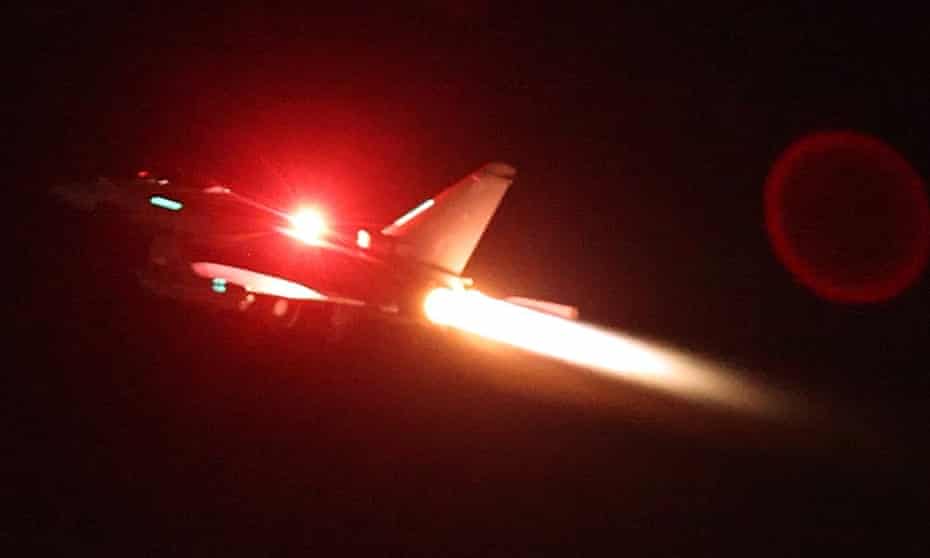In the first military operation authorised by the Labour government, British fighter jets joined American forces overnight in coordinated airstrikes against Houthi rebels in Yemen.
Royal Air Force Typhoon jets, supported by Voyager air tankers, struck a series of buildings located 15 miles south of the capital, Sana’a. According to the UK Ministry of Defence, the targeted sites were being used by the Iran-backed Houthi movement to manufacture drones responsible for recent attacks on merchant shipping in the Red Sea and the Gulf of Aden.
Defence Secretary John Healey described the strikes as a response to “a persistent threat from the Houthis to freedom of navigation,” noting the broader economic impact. “A 55% drop in shipping through the Red Sea has already cost billions, fuelling regional instability and risking economic security for families in the UK,” Healey posted on social media shortly after midnight.
Further official updates are expected later on Wednesday.
This marks Britain’s first participation in the intensified American bombing campaign known as Operation Rough Rider, launched under President Donald Trump in March. While the UK had previously joined the US for five rounds of airstrikes earlier in 2024, it had refrained from participating in the renewed and more aggressive phase until now.
Since March 15, US Central Command reports that 800 targets have been struck, resulting in the deaths of “hundreds of Houthi fighters and numerous Houthi leaders.” However, concerns are growing over the rising civilian toll. This week, Houthi officials claimed 68 people were killed in a strike on a migrant detention centre in Saada, while 80 civilians reportedly died during an attack on the port of Ras Isa on April 18.
Annie Shiel, US Director at the Center for Civilians in Conflict (Civic), criticised the ongoing air campaign, stating that the strikes “continue to raise significant questions about the precautions taken to prevent civilian harm, as required by both international law and US policy.” She also pointed to an apparent shift in doctrine under Trump’s leadership, with greater emphasis on offensive capability and reduced attention to mitigating civilian casualties.
The UK government insisted it had taken all necessary measures to minimise harm to civilians. According to the Ministry of Defence, Paveway IV precision-guided missiles were employed following “very careful planning,” and the strike was conducted at night to further lower the risk to civilians. No formal damage assessment has yet been released.
While the Pentagon offered little immediate comment, US Defence Secretary Pete Hegseth has repeatedly stressed that American military operations must focus on “lethality, lethality, lethality,” notably cutting several programmes aimed at reducing civilian casualties.
Meanwhile, the Houthis, who have controlled Sana’a since 2014, confirmed multiple airstrikes around the capital and in Saada Province but offered few other details. The rebel group claims its attacks on shipping are in support of Hamas and Palestinians amid Israel’s ongoing military offensive in Gaza.
In a separate incident underscoring the risks involved in the region, a $60 million US Navy F-18 Super Hornet jet was lost at sea on Tuesday. Reports suggest the USS Harry S. Truman aircraft carrier, towing the jet, made a hard evasive manoeuvre to avoid incoming Houthi fire, causing the aircraft to slip overboard and sink.
Operation Rough Rider has not been without controversy domestically. Criticism has been directed at Hegseth’s unconventional use of the unclassified Signal messaging app to share sensitive operational details, including within a group that allegedly contained at least one journalist.
The situation in the Red Sea remains highly volatile as western allies step up efforts to counter Houthi attacks, with tensions likely to rise as the conflict increasingly threatens global shipping lanes and regional stability
Read Also: 35 dead after U.S strikes in Yemen, Houthis claim

